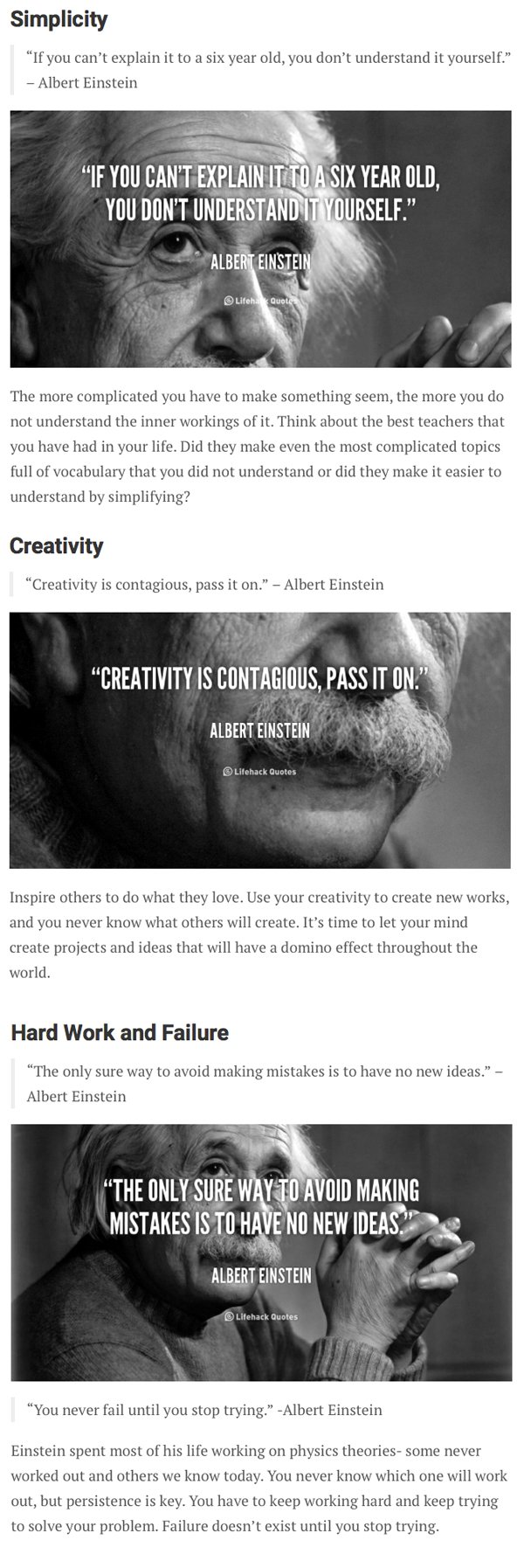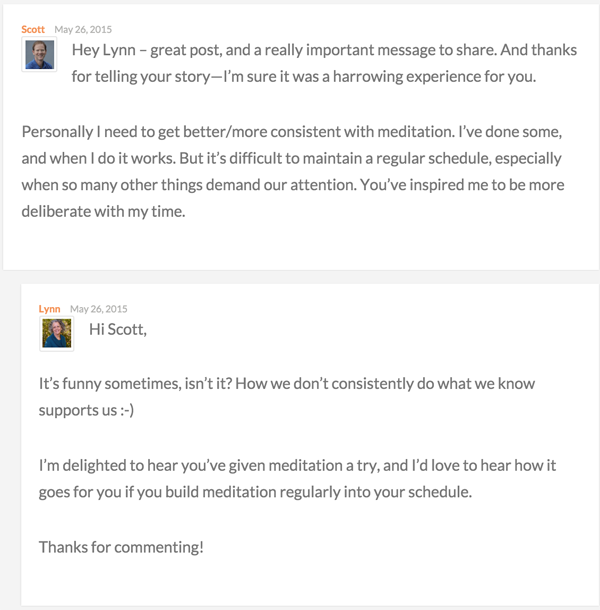
How the heck do they do it?
How do your favorite bloggers attract so many gung-ho, drum-thumping followers?
Be honest – you’d love to inspire that much loyalty.
You try your darndest to emulate them, but nothing seems to work.
Your visitors are like water pouring through a strainer.
They may come to check out an intriguing headline, but they hardly ever seem to stick around.
In other words, few visitors seem to turn into followers.
So what is left to try? You feel defeated, destined to remain a small-time blogger.
But what if you could use the secrets of psychology to mesmerize your visitors and dazzle them into becoming devoted followers?
First, you need to understand the three psychological triggers underlying reader loyalty.
The Hard-Wired Triggers of Undying Reader Loyalty
Each of us is unique in our own way, but we all have basically the same psychological machinery, triggering us to feel key emotional reactions under certain circumstances.
So when we come across a particularly mean-looking dog in the park, our fear reaction triggers, and we feel an impulse to back away.
Likewise, when we see a picture of a good-looking stranger on a dating app, our attraction response is triggered, and we feel a little buzz telling us to find out more.
It’s as though we have a bunch of tiny sensors in our brains that, when triggered by the right signals, make us want to do things without even understanding why.
And as it turns out, loyalty has specific triggers too.
In fact, according to Columbia University researcher Heidi Grant Halvorson, there are three chief psychological triggers that create feelings of loyalty.
And whether they do it intentionally or not, the most successful bloggers in the blogosphere trip all three of these loyalty triggers, enchanting visitors into becoming committed followers.
Loyalty Trigger #1: Warmth
Blog visitors will be drawn to you if they perceive you to be appropriately warm.
This is because humans unconsciously associate warmth with altruism – that is, you’re the kind of person who cares about others and might even offer to help a stranger.
Readers also instinctively sense that a warm person won’t try to mislead or manipulate them, for instance, to make a quick buck.
If you can demonstrate a warm demeanor via your blog, you’ll transmit all of these positive feelings directly into the hearts of your readers – creating attachment and loyalty.
However, too much warmth can have the opposite effect, making you seem desperate and needy, so you must strike the right balance.
Don’t worry – we’ll get into exactly how to do that below.
Loyalty Trigger #2: Competence
Warmth is important, but it’s not enough to create long-lasting loyalty.
Your readers also want to feel confident that you are competent – that you know what you’re talking about. Otherwise why would they invest their precious time and energy in your ideas?
Demonstrating competence both directly (by showing expertise) and indirectly (by showcasing endorsements from others) is critical to winning reader loyalty.
But as with warmth, going overboard to appear competent can backfire. You might come off cocky and unapproachable, which could intimidate readers into keeping their distance.
Fortunately, you can appear confident in your abilities without being overbearing. Again, don’t worry – we’ll cover how to do that.
Loyalty Trigger #3: Relevance
Ever stumbled across a blog on your favorite topic only to quickly feel a lack of connection?
Maybe you felt it was intended for someone with a more advanced background, or maybe it was targeted toward readers with slightly different goals than your own.
When that happens, it’s possible that the blogger was deliberately targeting a different kind of reader. But it’s equally possible that the blogger didn’t have enough insight into her target reader’s actual situation (or did a poor job communicating it).
In contrast, when a blogger displays deep insight into her visitors’ challenges, goals, views and experiences, she pulls the third loyalty trigger – relevance – and readers do feel a connection and want to stick around.
If you make your readers feel understood, and show them your content is relevant to their lives, you’ll successfully place the final piece in the loyalty jigsaw puzzle.
Want to know how to put all these triggers to work for you? Read on.
1) Tell Stories from Your Reader’s Perspective
Loyalty Trigger: Relevance
Many bloggers assume that telling personal stories will help readers relate to them, encouraging loyalty. And that’s somewhat true.
However, when you tell a story from your perspective, readers must take the extra step of relating it back to their own experience before they can fully connect with it.
So what if you were to cut out your I’s and me’s and tell stories from the reader’s perspective straightaway?
You’d be pulling the relevance trigger hard.
How to Activate It
Consider the following (hypothetical) personal story:
“A few weeks ago, I almost had a meltdown when my dog pooped on the carpet, AGAIN. God, it was frustrating! I realized that my dog hates it when I’m out of the house for more than three hours, that needy little diva. Out of sheer desperation, I decided to buy a robot dog to keep her company. Here’s what happened . . .”
Now let’s translate the story and tell it from the reader’s perspective:
“Have you ever wanted to cry in frustration after your pet has ruined yet ANOTHER carpet? Is the fur-ball-of-your-eye too emotionally needy to stay home alone for long? I’d heard that robot dogs can provide companionship to cats and dogs alike. So I decided to try it out with my own naughty little Pug, Cherry. Here’s what happened . . .”
See the difference?
Your personal experiences will always remain excellent raw material for your writing. After all, a deep insight into your own problem might shine a light on a similar problem faced by readers.
But the majority of your posts (and especially their openings) should be written from the perspective of readers themselves.
That way, your content will feel relevant from the get-go.
2) Sprinkle Your Writing with Success Stories
Loyalty Trigger: Competence
If you’re truly a master of your topic, you should have some success stories to show, right?
Your visitors think so (subconsciously, at least).
That’s because genuine competence leaves success in its wake. People follow the advice and theyget results.
Fortunately, you don’t have to prove that you’re worthy of a Nobel prize to get readers to trust that you know what you’re talking about.
Even small examples where your ideas made a difference in people’s lives will trip off thecompetence trigger.
How to Activate It
If you’re new to blogging, the best way to get started with this is to pepper your blog posts with real examples that prove your ideas work.
“Daisy of Artsy Crafts used this strategy, and she doubled her sales in just three months!”
“Several friends adopted this approach, and each one found a new job within two months.”
Just as with resume writing, it’s better to write in terms of specific outcomes instead of broad claims.
And once your readers have experienced success that’s directly attributable to your blog, you can start to incorporate that too:
“Since writing my last post about tantric breathing techniques, several readers have written to tell me how much more relaxed they feel following the exercises. This post is going to give you a few additional techniques to try . . .”
Of course, the Rolls-Royce version of this approach is to write an entire blog post centered around a reader case study.
For instance:
- “How Using the XYY Technique Saved One Reader $10,000”
- “How 3 Divorcées Found New Love Online with these Profile Drafting Tips”
Whether you start modestly or boldly, telling readers about people whose lives have improved because of your ideas is a rock-solid way to get readers addicted to your blog.
3) Show Your Readers How You’re Just Like Them
Loyalty Triggers: Warmth, Relevance
As bloggers, we can get so caught up in the process of creating great content that we lose sight of the fact that we’re writing to connect with people.
We forget to appeal to them on a more personal level, and by neglecting to highlight common ground we introduce a subtle barrier that diminishes the human connection – and undermines loyalty.
Fortunately, you already have at least one major thing in common with your blog readers – an interest in your blog topic. So you can easily activate the warmth and relevance triggers by drawing parallels between yourself and your reader.
How to Activate Them
Show readers you’re just like them with the following approaches:
First, use the words “us” and “we” in your writing more frequently.
You can also put yourself in a group with your readers by using phrases like: “health geeks like us,” “fashion lovers like us,” “technology nerds like us” or “grammar freaks like us.”
This is very powerful. It says: “I get you, and you get me” – one of the most powerful loyalty-inspiring sentiments known to humankind.
Second, remind your readers that you were a beginner, too.
Sometimes when you’re in the role of teacher, readers find it more difficult to relate to you because of the knowledge gap.
So reminding them occasionally that you were once a beginner is another way to foster devotion.
Try telling a story about how you learned a particular lesson the hard way.
For example:
“Have you ever tried to make a sales pitch inside of an email newsletter and gotten a ton of unsubscribes? That happened to me, and I was afraid to promote anything to my list. Until I learned this simple lesson . . .”
Highlight the things you have in common with your readers and you’ll appear warmer and more relevant. Remind them you were in their shoes not long ago and you’ll multiply the effect.
Loyalty is sure to follow.
4) Credit Your Influencers
Loyalty Trigger: Competence
As a blogger, the pressure to appear as though you know everything about your topic can feel intense.
We want our readers to turn to us for guidance. We want them to think we’re the real deal.
We fear that if they discover not every one of our ideas is completely original, we’ll be dismissed as second-rate.
But the truth is, research shows that people who pretend to be islands of knowledge appear 20%–30% less competent than people who give others credit.
This is because truly competent people know that it’s impossible to figure everything out alone.
So go ahead and give credit to your influencers. You’ll actually trip off, not undermine, thecompetence trigger.
How to Activate It
Chances are that many of your blog posts are inspired in part by the work of others.
To get started giving credit to your influencers, all you have to do is start mentioning the books, articles, blog posts, documentaries, classes and conversations that help you craft each new post.
There are many creative ways to mention your favorite experts.
Here are a few ideas:
Link to them
When you reference someone else’s idea or work, link to them, like Tim Soulo did (twice!) in this post from Blogger Jet.
Quote them
Quoting someone puts them in a position of authority, and it’s a great way to show that your knowledge doesn’t exist in a bubble.
Here’s an example from NDTV.com:
Summarize them
Give a quick overview of your favorite influencer’s most important ideas, like Lifehacker did with this post: 11 Life Lessons from Albert Einstein
Follow them
Follow another expert’s advice and write a case study highlighting your results.
That’s what Carrie McBride did here:
Giving credit to others won’t make you look inferior or like a copycat.
On the contrary, you’ll appear savvy and strategic, and people will want to join you for the journey.
5) Display a Strategic and Prominent Personal Photo
Loyalty Triggers: Warmth, Competence
The right personal photo can inspire feelings in your visitors that are difficult to create with words.
This is because we are naturally drawn to certain physical qualities, such as a confident smile and a relaxed expression.
These attributes serve as cues for the warmth and competence triggers, stimulating feelings of loyalty.
Anyone can display these traits in a photo, so why leave that opportunity unexploited?
How to Activate Them
The following photo properties were revealed by a study of 60,000 photo evaluations to project the optimal combination of both warmth and competence:
- Make sure your face casts a shadow all the way around your jaw. To achieve this, try tilting your chin down slightly. According to the research, a defined jawline will maximize your appearance as both competent and as warm.
- Smile with teeth, but avoid a laughing smile. According to the data, a smile that’s too small will make you appear cold. A smile that’s too big will make you seem less competent.
- “Squinch,” or slightly squint with your eyes. Slightly narrowed eyes project confidence and give the impression of competence. Wide eyes, in contrast, can convey fear (the enemy of competence).
- Show your head and shoulders. The same study determined that an upper body framing is best for presenting as both competent and warm. Ideally you should avoid a full-body shot, but don’t exclude your neck and the tops of your shoulders.
If you aren’t sure which of several photos to choose, try using an app like photofeeler.
Anonymous users will rate your photo on three dimensions: likeability (i.e., warmth), competence and influence (which is related to competence).
Lastly, make sure to place your photo in a spot visible to a first-time reader stumbling on one of your posts. This will help you maximize the chances that the visitor will remember you favorably, and maybe even influence them to become a subscriber right away.
A good place for the photo is at the top of your sidebar, like this:
Alternatively, author photos placed directly under the post title (such as the ones here on BBT) can work well too.
If you take the time to find and position the perfect photo, you’ll make an impression on your readers as warm and competent visually as well as intellectually, doubling your impact.
6) Use Comment Replies to Show Empathy and Consistency
Loyalty Triggers: Warmth, Competence, Relevance
Reader comments present a prime opportunity to activate all three loyalty triggers.
Showing empathy and being consistent will help you be seen as warm, competent and relevant to your audience.
Conversely, neglecting or misjudging comments can seriously diminish reader loyalty.
For example, a blogger who ignores reader comments risks coming off as cold and uncaring.
At the other end of the spectrum, a blogger who is too eager to please in his comments can give the impression of desperation.
But if you employ the right strategy, comment replies are a rare opportunity to pull all three loyalty triggers at once.
How to Activate Them
Getting comments right is mostly about making the time commitment.
For starters, in the first couple of days after your post is published, you should respond to comments as quickly as you can. Try to respond to any comments that appear within the first few days, even if you don’t get to them right away.
By responding promptly and consistently, even with very short replies, you display two of the most potent indicators of warmth – reliability and integrity.
In fact, research by University of Pennsylvania’s Paul Rozin suggests that people are more likely to remember you as warm and helpful if you do this than if you sporadically post saccharine compliments and gratitude.
So be consistent, even if it means having no time for small talk.
Secondly, if a reader takes the time to stop by and share a problem, make sure to empathize in your comment reply by reflecting their frustration back to them insightfully.
Phrases like “It sounds like you feel” or “I’m sorry that happened to you” work wonders. They will demonstrate that you have deep insight into their situation (making what you have to say relevant), that you are warm, and that you are competent, all in one shot.
Here’s an example from adaringadventure.com:
Here’s another, this time from jodichapman.com:
Never fake agreement or contradict the points you made in your post to try to win likeability points. People see through this, and it can destroy trust.
Instead, if a commenter writes something that doesn’t resonate with you, strive to see their point of view, but if you still disagree, politely remain firm and thank them for stopping by and adding to the conversation.
7) Let Your Readers’ Motivational Style Drive Your Headlines
Loyalty Triggers: Competence, Relevance
Generally speaking, people are primarily motivated by one of two things:
- Rewards – i.e., gaining value
- Self-protection – i.e., avoiding harm
If your headlines miss your readers’ core motivational style, your content won’t feel strongly relevant to them.
Fortunately, it’s easy to make sure your headlines are not only compelling but also trip off thecompetence and relevance triggers.
How to Activate Them
If you think about it for a few moments, you can probably guess whether your readers are more likely eager for rewards or safety from future problems.
Do your target readers care most about acquiring exciting goodies (fabulous recipes, more money, the newest technology, etc.)?
Or are they more concerned with maintaining the status quo and warding off problems (saving for retirement, staying healthy, saving relationships, etc.)?
Once you’ve categorized your readership, match your post headlines to your typical reader’s motivation style.
So if your readers are likely more reward-focused, tantalize them with the threat of missing out on rewards. For example:
- 7 Mistakes That Are Holding You Back from Your Next Promotion
- The 3 Hidden iPhone 6 Features You Don’t Want to Miss
- 10 Thanksgiving Recipes That Will Be on This Year’s Hippest Tables
In contrast, if your readers are more likely self-protection-focused, remind them that by not reading your posts they are exposing themselves to risks:
- The Ultimate Guide to Avoiding Poverty in Retirement
- 8 Cancer-Fighting Foods You’ve Never Heard About
- How to Protect Yourself from Divorce in the Age of Internet Flirting
A post on a personal finance blog (which is more likely self-protection-focused) titled “6 Ways to Have a Blast on a Budget This Summer” might appeal to some readers, sure.
But it likely won’t resonate as deeply with most readers as a post with the title “6 Hidden Money Traps to Avoid This Summer Vacation.”
Adjusting your headlines to emphasize either rewards or self-protection (depending on your audience) will pull the competence and relevance loyalty triggers and keep readers clicking on your posts time and time again.
Let’s Get People Hooked on Your Blog
You put your heart and soul into your blog, and you deserve a loyal audience.
The right kind of connection will transform fleeting visitors into regular readers.
It’s time to add another powerful tool to your bag of blogging tricks – the psychology of reader loyalty.
By demonstrating warmth, competence and relevance through the deliberate blogging behaviors described above, you’ll finally start attracting readers who choose to stick around.
And the best thing? It really just boils down to learning how to communicate the best version of you to your readers – your kindest, most skillful, reliable and empathetic self.
Keep practicing these techniques, little by little, and you’ll experience first-hand the beauty of making powerful connections with your readers, inspiring long-lasting loyalty.
Visitors will become addicted to your blog, your audience will swell, and you can finally leave those small-time bloggers in the dust.










No comments:
Post a Comment